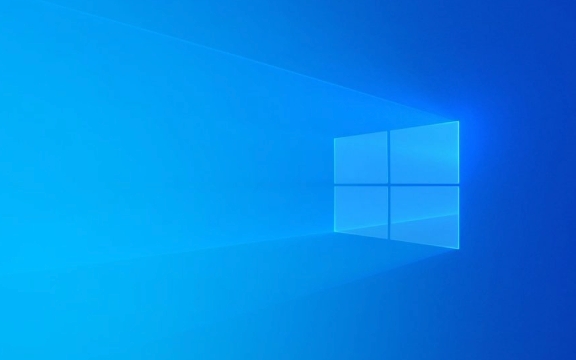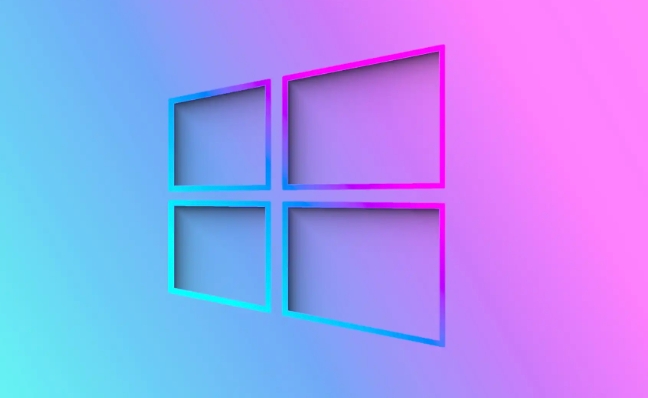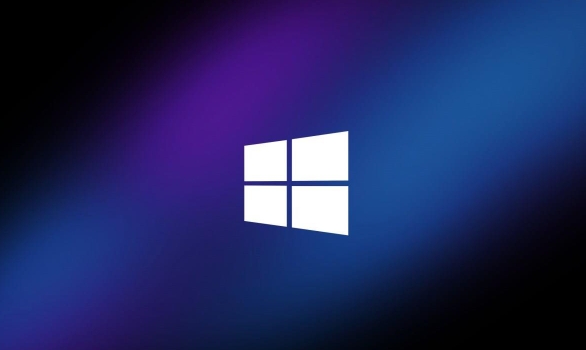 Computer Tutorials
Computer Tutorials
 Computer Knowledge
Computer Knowledge
 Linux vs Windows: Which Operating System is Better for You?
Linux vs Windows: Which Operating System is Better for You?
Linux vs Windows: Which Operating System is Better for You?
Windows is better for beginners due to ease of use, seamless hardware compatibility, and support for mainstream software like Microsoft Office and Adobe apps. 2. Linux outperforms Windows on older or low-resource hardware with faster boot times, lower system requirements, and less bloat. 3. Linux offers superior security and privacy through its permission model, open-source nature, and reduced malware targeting, while Windows collects more telemetry and faces more cyber threats. 4. Windows dominates in gaming and professional software availability, whereas Linux excels in development, server environments, and command-line tools. 5. Linux is free to use and distribute with no licensing costs, unlike Windows and its paid software ecosystem. Ultimately, choose Windows for simplicity, gaming, and office work; choose Linux for performance, privacy, and technical control—try both to see which fits your needs best.

Linux vs Windows: Which Operating System is Better for You?

There’s no one-size-fits-all answer to whether Linux or Windows is better—it depends entirely on your needs, technical comfort, and use case. Here’s a breakdown to help you decide which OS suits you best.
1. Ease of Use: Windows Wins for Most Beginners
If you’re used to clicking icons, installing software with a wizard, or relying on mainstream apps like Microsoft Office, Windows is more beginner-friendly. It’s what most people grow up with, and hardware compatibility is nearly seamless out of the box.

- Plug in a printer? It usually just works.
- Want to play a new game? Steam and most AAA titles support Windows natively.
- Software like Adobe Photoshop, QuickBooks, or Microsoft 365 runs best (or only) on Windows.
Linux has improved a lot—distros like Ubuntu, Linux Mint, or Zorin OS are user-friendly—but you’ll still run into situations where drivers, peripherals, or apps don’t work immediately. Some tasks require terminal commands or manual configuration.
? Bottom line: If you want something that "just works" with minimal tinkering, Windows is the safer choice.

2. Performance and System Requirements: Linux Takes the Lead
Linux is generally lighter and faster, especially on older or low-resource hardware.
- You can run a full desktop environment on machines with as little as 1–2 GB of RAM.
- Boot times are often faster.
- Less background bloat—no forced updates or telemetry slowing things down.
Windows 10/11, while powerful, demands more resources. Even with modern hardware, Windows tends to accumulate junk over time unless maintained.
- Bloatware from OEMs
- Automatic updates that restart your PC
- Background services you can’t easily disable
? Best for older PCs or performance-focused users: Linux.
3. Security and Privacy: Linux is More Secure by Design
Linux is inherently more secure due to:
- Smaller attack surface (fewer malware targets)
- Permission model (you need
sudoto make system changes) - Open-source transparency (bugs and backdoors are easier to spot)
Windows, being the dominant desktop OS, is the primary target for malware, ransomware, and phishing attacks. While Windows Defender has improved, you still need to be cautious about downloads, emails, and permissions.
Also, Windows collects more telemetry data—some of it can’t be fully disabled without third-party tools.
? Privacy-conscious or security-focused users: Linux has the edge.
4. Software and Gaming: Windows is Still King
This is where Linux struggles, despite progress.
- Professional software: AutoCAD, Premiere Pro, Final Cut (on Mac), SolidWorks—mostly Windows-only.
- Gaming: Steam supports Linux via Proton, and many games now run well on Steam Deck (which uses Linux). But it’s still not 1:1 with Windows. Some anti-cheat systems (like Easy Anti-Cheat) block Linux entirely.
That said, Linux excels in development and server environments:
- Native support for Python, Ruby, Node.js, Docker, etc.
- Built-in SSH, cron, bash—ideal for devs, sysadmins, and DevOps
- Most web servers run Linux (Apache, Nginx, etc.)
? Gamers and creative pros: Stick with Windows.
? Developers and tech-savvy users: Linux is a strong contender.
5. Cost: Linux is Free (in Every Sense)
- Windows costs money—either built into your PC price or as a separate license.
- Many Windows apps (Office, Adobe, antivirus) are subscription-based.
- Linux is free to download, use, modify, and share. So are most of its apps (LibreOffice, GIMP, Firefox, etc.).
You save money not just on the OS, but on software too.
So, Which Should You Choose?
| Your Priority | Recommended OS |
|---|---|
| Plug-and-play ease | Windows |
| Older or slow hardware | Linux |
| Gaming or creative apps | Windows |
| Programming or server work | Linux |
| Privacy and control | Linux |
| Business or Office use | Windows |
You don’t have to pick one forever. Many people dual-boot or use Linux in a virtual machine. Others switch entirely once they get comfortable.
Bottom line:
- Go with Windows if you want simplicity, broad software support, and gaming.
- Choose Linux if you value speed, security, freedom, and don’t mind a learning curve.
It’s not about which OS is “better”—it’s about which one works better for you.
Basically, try both. Ubuntu or Linux Mint in a VM takes 20 minutes to set up. See how it feels.
The above is the detailed content of Linux vs Windows: Which Operating System is Better for You?. For more information, please follow other related articles on the PHP Chinese website!

Hot AI Tools

Undress AI Tool
Undress images for free

Undresser.AI Undress
AI-powered app for creating realistic nude photos

AI Clothes Remover
Online AI tool for removing clothes from photos.

Clothoff.io
AI clothes remover

Video Face Swap
Swap faces in any video effortlessly with our completely free AI face swap tool!

Hot Article

Hot Tools

Notepad++7.3.1
Easy-to-use and free code editor

SublimeText3 Chinese version
Chinese version, very easy to use

Zend Studio 13.0.1
Powerful PHP integrated development environment

Dreamweaver CS6
Visual web development tools

SublimeText3 Mac version
God-level code editing software (SublimeText3)

Hot Topics
 What is the code number of Bitcoin? What style of code is Bitcoin?
Jul 22, 2025 pm 09:51 PM
What is the code number of Bitcoin? What style of code is Bitcoin?
Jul 22, 2025 pm 09:51 PM
As a pioneer in the digital world, Bitcoin’s unique code name and underlying technology have always been the focus of people’s attention. Its standard code is BTC, also known as XBT on certain platforms that meet international standards. From a technical point of view, Bitcoin is not a single code style, but a huge and sophisticated open source software project. Its core code is mainly written in C and incorporates cryptography, distributed systems and economics principles, so that anyone can view, review and contribute its code.
 How to configure Windows 11 firewall to allow PHP services PHP port open and secure settings
Jul 23, 2025 pm 06:27 PM
How to configure Windows 11 firewall to allow PHP services PHP port open and secure settings
Jul 23, 2025 pm 06:27 PM
To allow PHP services to pass through the Windows 11 firewall, you need to create inbound rules to open the corresponding port or program. 1. Determine the port that PHP is actually listening. If the built-in server is started with php-Slocalhost:8000, the port is 8000. If using Apache or IIS, it is usually 80 or 443. 2. Open the advanced settings of "WindowsDefender Firewall", create a new inbound rule, select "Program" or "Port", fill in the PHP or Web server path or specify the port number. 3. Select Allow Connections, check the applicable network configuration file, name the rules and add a description. The IP addresses that are allowed to access, such as local network or specific IP, can be restricted through the scope. Safety
 How to make PHP container support automatic construction? Continuously integrated CI configuration method of PHP environment
Jul 25, 2025 pm 08:54 PM
How to make PHP container support automatic construction? Continuously integrated CI configuration method of PHP environment
Jul 25, 2025 pm 08:54 PM
To enable PHP containers to support automatic construction, the core lies in configuring the continuous integration (CI) process. 1. Use Dockerfile to define the PHP environment, including basic image, extension installation, dependency management and permission settings; 2. Configure CI/CD tools such as GitLabCI, and define the build, test and deployment stages through the .gitlab-ci.yml file to achieve automatic construction, testing and deployment; 3. Integrate test frameworks such as PHPUnit to ensure that tests are automatically run after code changes; 4. Use automated deployment strategies such as Kubernetes to define deployment configuration through the deployment.yaml file; 5. Optimize Dockerfile and adopt multi-stage construction
 How to build an independent PHP task container environment. How to configure the container for running PHP timed scripts
Jul 25, 2025 pm 07:27 PM
How to build an independent PHP task container environment. How to configure the container for running PHP timed scripts
Jul 25, 2025 pm 07:27 PM
Building an independent PHP task container environment can be implemented through Docker. The specific steps are as follows: 1. Install Docker and DockerCompose as the basis; 2. Create an independent directory to store Dockerfile and crontab files; 3. Write Dockerfile to define the PHPCLI environment and install cron and necessary extensions; 4. Write a crontab file to define timing tasks; 5. Write a docker-compose.yml mount script directory and configure environment variables; 6. Start the container and verify the log. Compared with performing timing tasks in web containers, independent containers have the advantages of resource isolation, pure environment, strong stability, and easy expansion. To ensure logging and error capture
 How to Set Up a Dual Monitor Display on Windows
Jul 27, 2025 am 04:16 AM
How to Set Up a Dual Monitor Display on Windows
Jul 27, 2025 am 04:16 AM
TosetupdualmonitorsonWindows,firstcheckhardwarecompatibilitybyensuringyourGPUhasmultiplevideoportsandyouhavethecorrectcables;connectthesecondmonitor,poweronbothdisplays,andletWindowsdetectthemautomatically;thenopenDisplaysettings,identifyandarrangeth
 What is a blockchain fork? How to understand and deal with blockchain network forks?
Jul 24, 2025 pm 09:57 PM
What is a blockchain fork? How to understand and deal with blockchain network forks?
Jul 24, 2025 pm 09:57 PM
Blockchain forks are the natural result of network upgrades and community differences. 1. Soft forks are mild upgrades that are forward compatible, and old nodes can still verify new blocks; 2. Hard forks lead to permanent chain splits, and all nodes must be upgraded otherwise they will remain in the original chain; 3. The reasons for forks mainly include technological upgrades, community concept differences and unexpected network problems; 4. User response strategies are to pay attention to official information, understand asset mapping rules, beware of fraud risks, and suspend operations during forks to ensure asset security and correctly handle new and old chain assets. Ultimately, understanding forks will help to deeply grasp the decentralized evolutionary nature of web3.
 How to install Composer on Windows?
Jul 25, 2025 am 01:28 AM
How to install Composer on Windows?
Jul 25, 2025 am 01:28 AM
CheckPHPinstallationbyrunningphp-vinCommandPromptandensurePHPisinPATH.2.DownloadtheComposer-Setup.exeinstallerfromgetcomposer.org,runit,followthewizard,andallowsystem-wideinstallation.3.Verifyinstallationbyrunningcomposer--versioninanewCommandPromptt
 What is the best screen capture tool for Windows
Jul 22, 2025 am 01:17 AM
What is the best screen capture tool for Windows
Jul 22, 2025 am 01:17 AM
Selecting the Windows Screenshot Tool depends on the requirements. 1. The built-in SnippingTool is suitable for simple screenshots and supports basic annotations; 2. GameBar is suitable for game or full-screen application screenshots; 3. Lightshot is free and fast, suitable for fast sharing but no advanced editing functions; 4. ShareX is powerful and customizable, suitable for advanced users, and supports a variety of upload services and video recording. Choose the most suitable tool according to the frequency of use and functional requirements.






